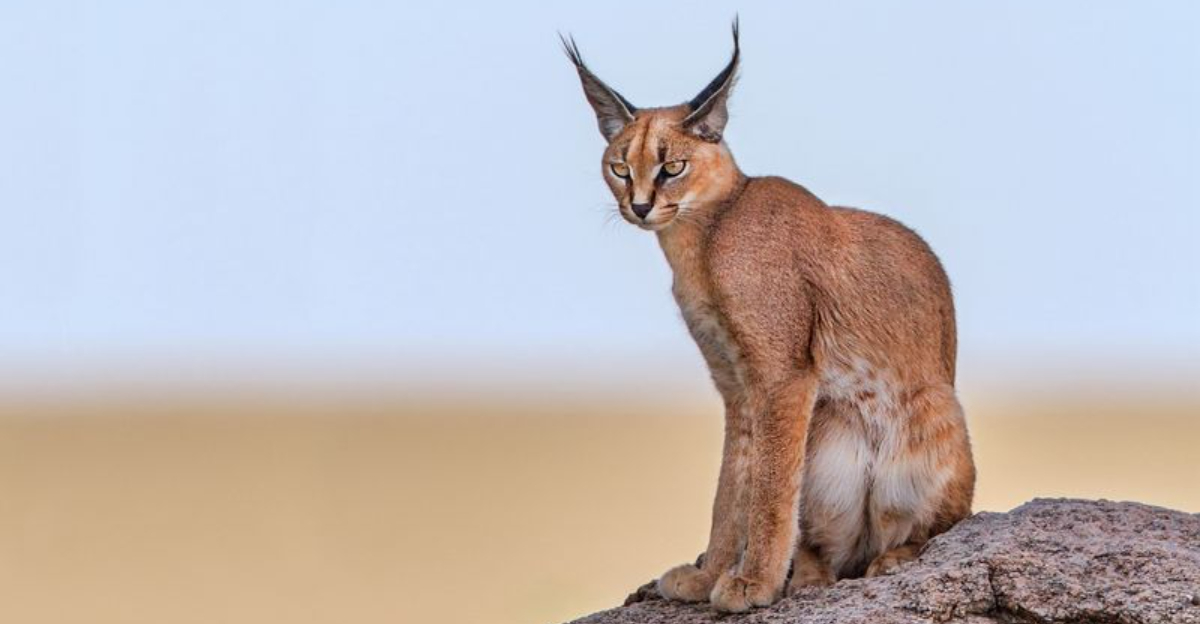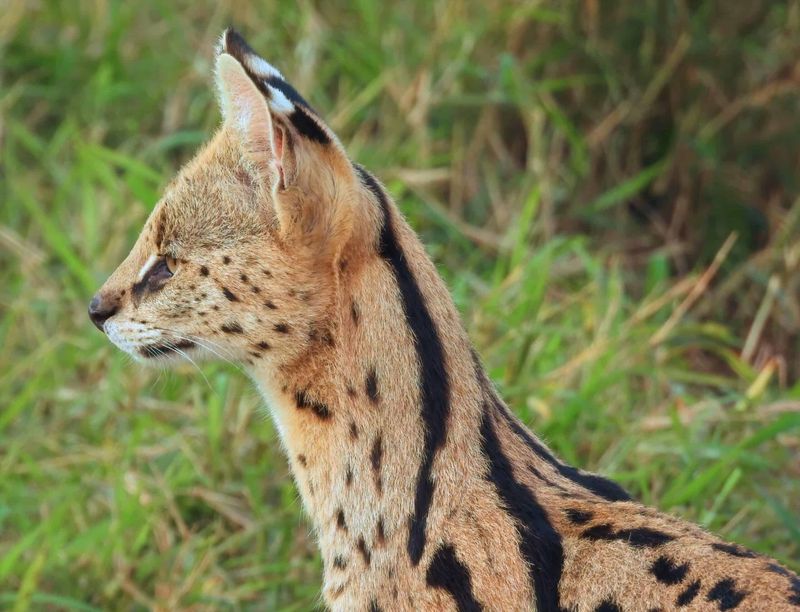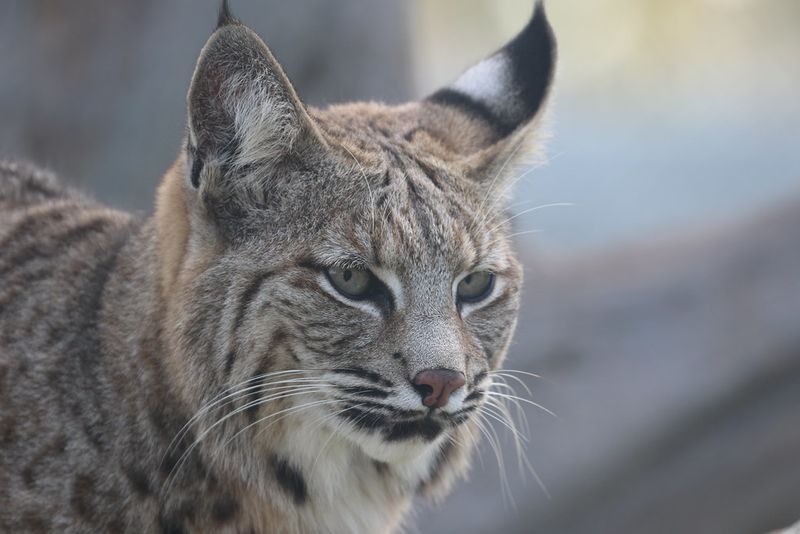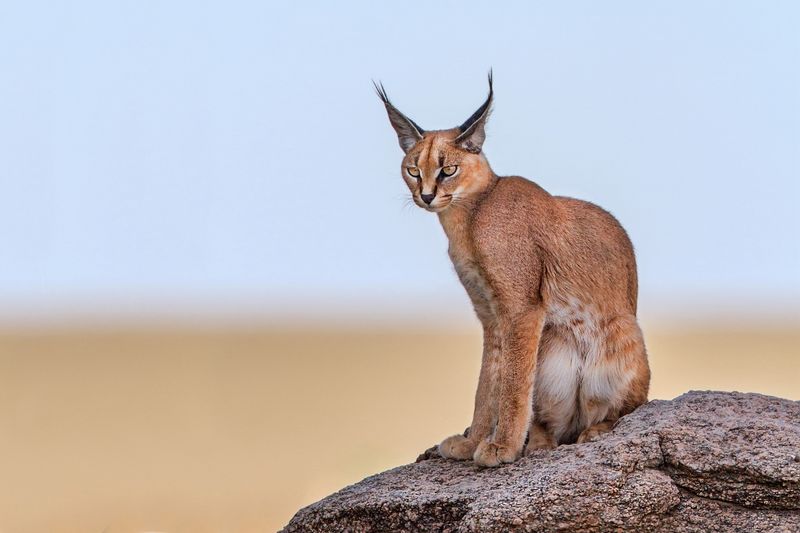📖 Table of Content:
In the wild, survival hinges on an animal’s ability to sense and react to its environment, and for many feline predators, sound is as vital as sight. While sharp claws and stealthy movement help them capture prey, it is their extraordinary hearing that often gives them the edge, particularly in environments where visibility is limited. Some wild cats have taken this sensory skill to a remarkable level, evolving ears that not only rotate like radar dishes but can also pick up the faintest rustle of movement.
These feline ears are marvels of natural engineering—capable of swiveling independently, tuning into high-frequency sounds, and even detecting prey underground. The positioning, shape, and sensitivity of their ears allow these cats to become nearly invisible hunters, striking with precision after locating prey they often never see. Each of these species has adapted its hearing to suit the specific needs of its environment, whether dense forests, tall grasslands, deserts, or snowy mountains.
From the desert-stalking sand cat to the bird-snatching serval, these six wild cats demonstrate how evolution can fine-tune anatomy for silent, deadly effectiveness. Their stories reveal not only the diversity of wild feline species but also the fascinating ways in which form meets function in the animal kingdom. Let’s explore how these cats use their radar-like ears to become masters of their domains.
1. Serval (Leptailurus serval)
Dominating the tall grasses of sub-Saharan Africa, the serval’s enormous ears stand out as its most recognizable asset. Built for sound reception, these ears are densely packed with muscles that allow subtle adjustments in angle and direction. Unlike many predators that rely on vision, the serval often hunts by sound alone, crouching and tilting its head until it zeroes in on the faint scurrying of a rodent or lizard. When the moment is right, it launches straight up into the air with astonishing precision, snatching birds from flight or mice from cover. Its ears also help it navigate in near darkness, turning the savanna into a stage of sonic cues. Their placement close together at the top of the head increases the field of sound it can scan at once. Altogether, the serval’s ears are its most reliable weapon in a landscape where both predator and prey rely on silence.
2. Bobcat (Lynx rufus)
Native to North America’s forests, deserts, and swamps, the bobcat adapts well to various environments thanks in part to its sensitive hearing. Instead of relying heavily on sight, this feline uses its triangular ears—adorned with small tufts and bordered by pale patches—to capture even the slightest noises. With the ability to swivel each ear independently, the bobcat gains a 3D auditory map of its surroundings. That auditory map helps it hunt effectively at dawn and dusk when light is low and visibility is poor. Often crouched low and hidden in underbrush, it waits silently, reacting instantly to the rustle of a rabbit or the burrow of a vole. The white patches behind the ears may act as visual signals to other bobcats, especially in low-light encounters between mother and cubs. Overall, these ears play a key role in making the bobcat one of the continent’s most efficient medium-sized predators.
3. Eurasian Lynx (Lynx lynx)
Dwelling in thick European and Asian forests, the Eurasian lynx depends on its acute hearing to compensate for the often obscured lines of sight in its habitat. Its tall ears, crowned with long black tufts, are not just a fashion statement—they act like directional microphones tuned to the natural world. Without needing to move its head, the lynx can scan a wide acoustic field, detecting noises muffled by snow or filtered through layers of vegetation. While stalking deer, hares, or grouse, it makes almost no sound itself, relying instead on its ears to do the work of tracking. These ears detect both the volume and direction of sound, giving the lynx a near-360-degree awareness. In cold climates where prey is sparse, missing a sound could mean missing a meal. As a result, the lynx’s survival is tightly bound to the functionality of its ears, helping it thrive in challenging conditions.
4. Caracal (Caracal caracal)
Sculpted for agility and stealth, the caracal’s signature feature—its tall, black ear tufts—makes it one of the most striking cats in the wild. These tufts may look ornamental, but they serve an important role in communication and possibly in camouflaging the cat’s true ear movements from prey. More critically, the caracal’s ears themselves are sophisticated audio tools, able to move independently and focus on specific sounds in the environment. In the dry savannas and forests where they roam, the ability to detect prey like birds or small mammals from a distance is essential. Using subtle shifts and rotations, they pinpoint noises with stunning accuracy, enabling deadly pounces even through dense vegetation. These ears can pick up frequencies far beyond human hearing, helping the caracal detect rustling leaves or faint squeaks from hiding rodents. Such adaptations make the caracal not only an elegant creature but a fierce and calculated predator.
5. African Wildcat (Felis lybica)
Blending into the arid landscapes of northern Africa, the African wildcat is a master of desert stealth, and its ears are essential to that title. Though modest in appearance, their placement high on the head and their precise movements give them the radar-like sensitivity needed for survival. Unlike some of its bolder relatives, the African wildcat often stalks quietly at night, relying on its ability to hear rodents moving beneath shrubs or dry ground. In these environments, sound travels differently, and the cat’s ears are attuned to pick up even the most subtle shifts in terrain. This sensitivity also protects it from larger predators, providing early warning of distant threats. Evolution has honed this sense so finely that it was passed down to domestic cats, which still exhibit remnants of that same auditory acuity. The African wildcat’s legacy, both wild and domestic, lies in its exquisitely tuned ears.
6. Sand Cat (Felis margarita)
Far from typical feline habitats, the sand cat inhabits some of the world’s harshest deserts, where hearing becomes more vital than sight. With a flat head and ears that are unusually low-set and broad, it appears almost comical—until its prey disappears beneath the sand. Those wide-set ears are perfectly adapted to detect underground or distant sounds, enabling the sand cat to hunt in complete darkness or during the quiet desert night. As it walks, its furry feet make no sound, allowing it to focus entirely on auditory signals from rodents and insects. The spacing of its ears helps it detect and triangulate sounds across wide, barren spaces with uncanny precision. This feline can even pause for long periods, motionless, simply listening until it hears the right cue. In a place where silence is survival, the sand cat’s ears give it a distinct and deadly advantage.






